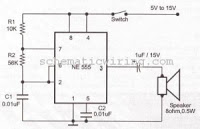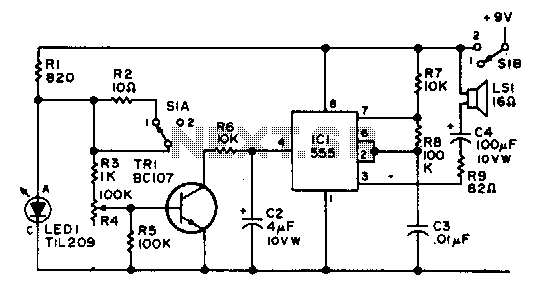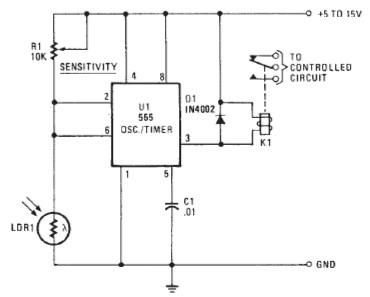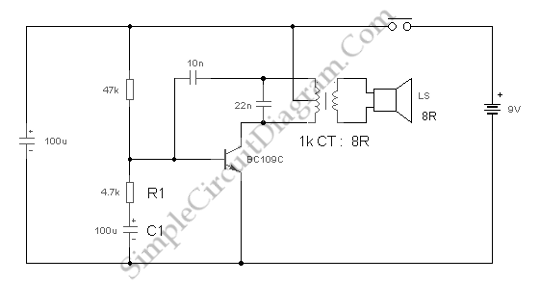
Electronic Roulette Game

R14 is configured to establish an initial "starting" speed for the oscillators U1A and U1B. As capacitor C2 charges, the oscillation gradually slows down during the discharging phase of C2, creating a roulette-wheel effect on LED S1 through resistor R10. The LED that remains illuminated indicates the winning number.
The circuit utilizes two operational amplifiers, U1A and U1B, configured as oscillators to generate a variable frequency output. The resistor R14 plays a crucial role in determining the initial frequency of oscillation by setting the charge and discharge time constants for capacitor C2. As C2 charges, the voltage across it increases, which in turn affects the feedback loop of the oscillators, leading to a gradual decrease in oscillation frequency.
The LED array, connected through resistor R10, displays the output of the oscillators. The roulette-wheel effect is achieved as the frequency of the oscillation decreases, resulting in a visual representation reminiscent of a spinning wheel. Each LED corresponds to a number, and as the oscillation slows, one specific LED will remain lit, indicating the winning number in the game.
The design can be further enhanced by incorporating a reset mechanism to allow the user to restart the oscillator sequence, as well as adjustable components to fine-tune the speed and duration of the oscillation. Additional features may include a display driver for larger LED arrays or integration with microcontrollers to introduce programmable elements into the game, enhancing user interaction and experience. R14 is set for an initial "starting" speed of the oscillator U1A and U1B. As C2 charges, oscillation begins slowin g down as C2 discharges, giving a roulette-wheel effect on LED SI through 10. The LED that remains on is the winning number.
The circuit utilizes two operational amplifiers, U1A and U1B, configured as oscillators to generate a variable frequency output. The resistor R14 plays a crucial role in determining the initial frequency of oscillation by setting the charge and discharge time constants for capacitor C2. As C2 charges, the voltage across it increases, which in turn affects the feedback loop of the oscillators, leading to a gradual decrease in oscillation frequency.
The LED array, connected through resistor R10, displays the output of the oscillators. The roulette-wheel effect is achieved as the frequency of the oscillation decreases, resulting in a visual representation reminiscent of a spinning wheel. Each LED corresponds to a number, and as the oscillation slows, one specific LED will remain lit, indicating the winning number in the game.
The design can be further enhanced by incorporating a reset mechanism to allow the user to restart the oscillator sequence, as well as adjustable components to fine-tune the speed and duration of the oscillation. Additional features may include a display driver for larger LED arrays or integration with microcontrollers to introduce programmable elements into the game, enhancing user interaction and experience. R14 is set for an initial "starting" speed of the oscillator U1A and U1B. As C2 charges, oscillation begins slowin g down as C2 discharges, giving a roulette-wheel effect on LED SI through 10. The LED that remains on is the winning number.





